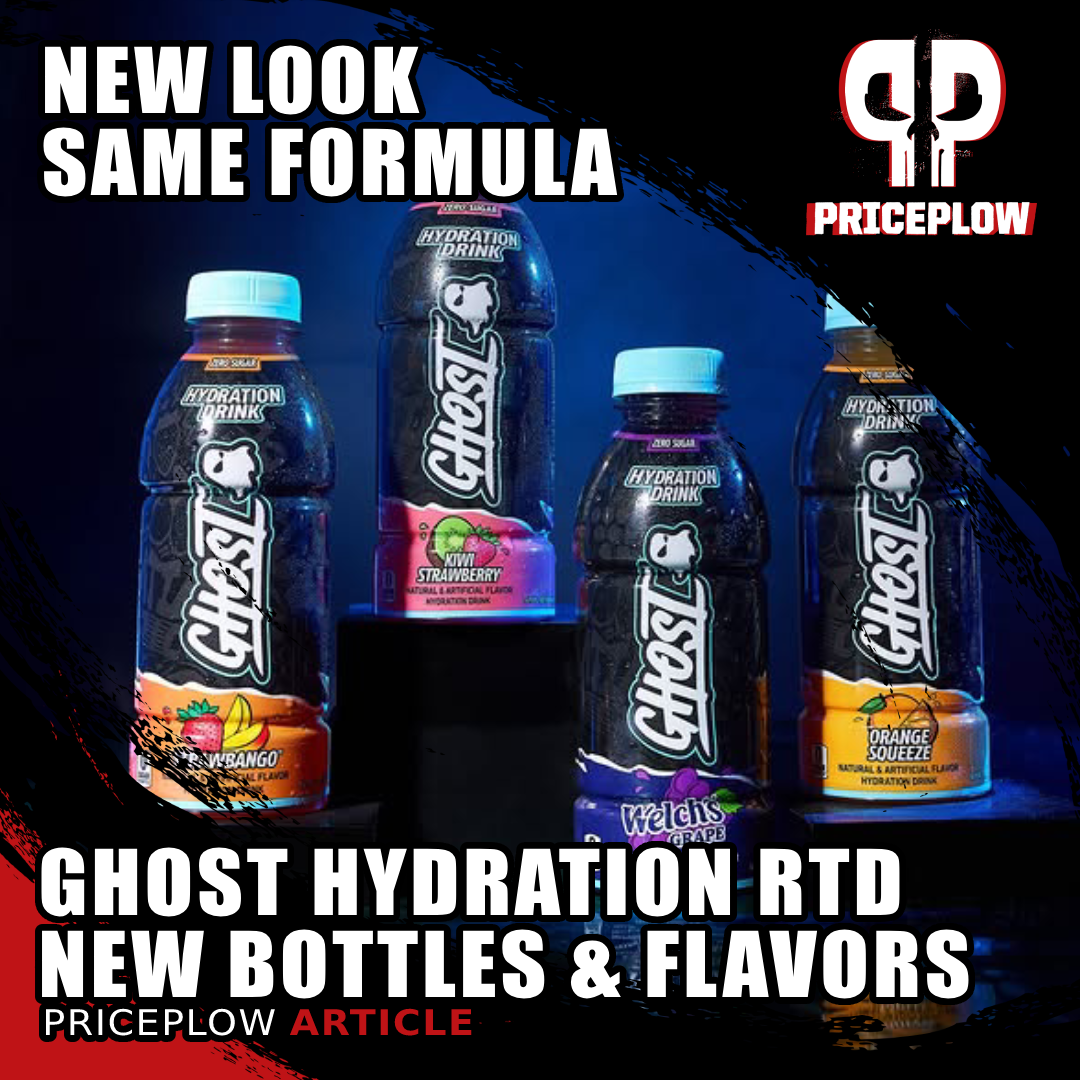
Ghost Hydration RTD has a fresh new look! Check out the updated bottle designs and new flavors - same great hydration formula inside.
While in Las Vegas for SupplySide West 2023, we spoke with Dan Lourenço from GHOST on Episode #116 of the PricePlow Podcast. The conversation was involved, but the big news to come out of it was the imminent release of the GHOST Hydration Drink!
Ghost Hydration RTD: As First Seen and Tasted on PricePlow!
Ghost Hydration RTD is a ready-to-drink version of the popular Ghost Hydration supplement. Shortly after the above podcast, Dan posted the following image to Twitter:
This article covers the backstory and nutrition facts panel of the product. First, see PricePlow's prices and availability, and sign up for our Ghost news alerts:
GHOST Hydration Drink – Deals and Price Drop Alerts
Get Price Alerts
No spam, no scams.
Disclosure: PricePlow relies on pricing from stores with which we have a business relationship. We work hard to keep pricing current, but you may find a better offer.
Posts are sponsored in part by the retailers and/or brands listed on this page.
Our Ghost Hydration RTD Initial Flavor Review
This area is reserved for Team PricePlow's upcoming videos.
Subscribe to our channel and sign up for notifications so you catch it when it goes live!
There are some major differences between this formula and their powdered Ghost Hydration formula. Let's take a look at what's new in the Hydration RTD.
Ghost Hydration RTD Nutrition Facts
Total Electrolytes - 996 mg
- Potassium - 700 mg (15% DV)
- Magnesium - 126 mg (30% DV)
- Chloride - 70 mg (4% DV)
- Calcium - 60 mg (4% DV)
- Sodium - 40 mg (2% DV)
Ghost Hydration RTD Added Active Ingredients
-
Aquamin Soluble (Seaweed-derived calcium citrate malate) - 500 mg
Aquamin Soluble contains marine-based calcium and other trace minerals that provide additional support for replenishing electrolytes depleted during exercise. This is slightly different from the Aquamin we've seen in their powdered formulas, but most likely for stability in the new liquid form. Customers should expect the same great benefits.
-
Magnesium - 126 mg (30% DV)
One of the most distinctive things about GHOST Hydration RTD is that it comes with a big serving of magnesium. With an impressive 30% of the magnesium daily value per serving, it's safe to say that magnesium is the focus of the GHOST Hydration RTD formula, which is something we don't usually see in hydration products.
Why is GHOST focusing on magnesium in Hydration RTD?
Hydration formulas are typically formulated with heavy physical exertion in mind – activities that make you sweat. This means they usually contain a healthy amount of sodium, since sodium is the most abundant electrolyte in sweat.
However, the industry approach to electrolyte formulation is changing, since most Americans get plenty of sodium already. In fact, since the median U.S. sodium intake is roughly 3,200 mg,[2] the average American could lose a few hundred milligrams of sodium in a day's sweat and still be over the minimum net sodium intake required for good health.
However, most Americans do not get enough magnesium (or potassium, which we'll discuss next). In fact, an estimated 79% of Americans are magnesium deficient.[3] This means that when it comes to magnesium, unlike sodium, any further loss of the mineral through sweat is likely to have significant negative effects on health.
So what does magnesium do? Well, in a word, everything. A mountain of peer-reviewed literature has shown that correcting even slight magnesium deficiencies can significantly improve:
Blood pressure[4-7] HbA1c and blood glucose[4,8,9] Insulin production[4,8,10] Insulin sensitivity[4,8,9,11] Type 2 diabetes risk[12-14] Bone mineral density[15] PMS symptoms[16-19] Lactic acid disposal[20] Muscle gains[21] C-reactive protein level and effects[21,22] Systemic inflammation[21-23] Exercise-induced muscle damage[24] Migraine symptoms and frequency[25-27]
Put simply, magnesium is as close to a panacea for health as you get in the supplement business, so it's pretty awesome to see such a hefty dose offered in a single serving of GHOST Hydration RTD.
-
Potassium - 700 mg (15% DV)
Like magnesium, potassium is a major shortfall nutrient in the American diet. Most of us aren't getting nearly enough potassium.[28]
Potassium plays an indispensable role in cardiovascular health,[28] largely because it antagonizes sodium. Since sodium can increase blood pressure, potassium's ability to balance sodium helps bring blood pressure down. In fact, evidence is mounting that a person's potassium-to-sodium ratio is actually more important for cardiovascular health than absolute sodium intake.[29,30]
Potassium is a potent trigger for vasodilation,[31-33] a mechanism in which blood vessels expand in diameter, causing a drop in blood pressure and heart rate. In fact, the vasodilatory effect of potassium is a huge factor in its ability to normalize blood pressure.[34-38]
Higher potassium intake can also help your body retain calcium, another electrolyte mineral. This can improve hydration and bone mineralization.[31,39] We love seeing a 700 mg dose in GHOST Hydration RTD – this is not only way beyond what the industry typically offers, but is also, thanks to the challenges of flavoring potassium, about as much potassium as you can realistically put in a single serving.
-
Senactiv (Panax notoginseng (root) and Rosa roxburghii (fruit)) extracts - 50 mg
Senactiv has been a favorite ingredient for Ghost even when it was formerly known as ActiGin. This ingredient has been used in other products including the prior Legend V2 pre-workout, current Size V2 muscle-builder, and their Hydration powder. Senactiv is GRAS-approved (generally recognized as safe) and an Informed Ingredient (formerly known as Informed Choice / Informed for Sport) which are both important as Ghost is selling this as a "food" rather than a dietary supplement.
No taurine
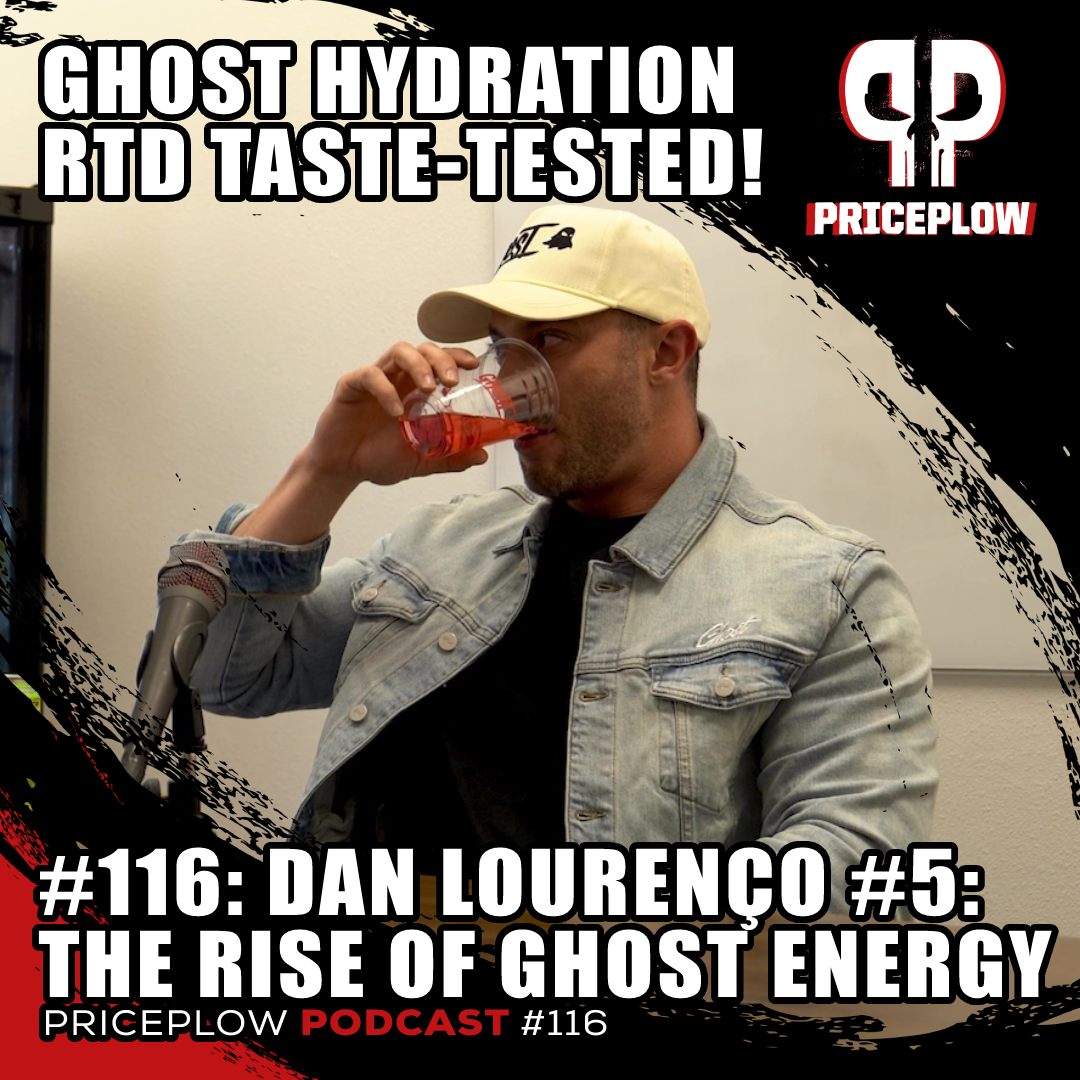
Dan Lourenço of Ghost Lifestyle returns to the PricePlow Podcast for his fifth installment in Episode #116, going over the meteoric rise of Ghost Energy and what's coming in 2024
A big statement Dan wanted to make is that Ghost Hydration RTD has no taurine. This is unfortunately due to a regulatory reason: it's not de-facto GRAS-approved (generally recognized as safe) in foods at a clinically significant dose.
This is an important distinction because Ghost Hydration RTD is sold as a "food" product with a nutrition facts panel (as opposed to a dietary supplement with a supplement facts panel) because of the slotting they want in grocery stores - it should be with the food/beverages, not supplements.
We're not sure of what that maximum legal dose is, but it's not near the gram that we'd like. So rather than educate people on the regulations of why it's "underdosed", they're forgoing the ingredient completely.
Added Vitamins and Minerals
- Vitamin B6 (as pyridoxine HCl) - 1.7 mg (100% DV)
- Vitamin B12 (as cyanocobalamin) - 2.4 mcg (100% DV)
- Vitamin C (as ascorbic acid) - 90 mg (100% DV)
A top contender approaches a new challenge in an aggressive marketspace
It's no secret that Ghost is competing against established brands like Gatorade and BODYARMOR. They're also joining other recently-popular brands that have launched their own RTD forms of electrolyte and hydration formulas.
A Hydration RTD to directly take on PRIME?!
The big story here is the high-potassium, low-sodium, and low-carb formula, which looks to be a direct attack on the current market leader, PRIME. Between the industry powerhouse led by Dan and Ryan, and the social media masterminds in Logan Paul and KSI, we should expect to see Ghost and PRIME rivaling it out as mainstream competitors as this category space grows.
While PRIME has the foothold, especially amongst the younger demographic, GHOST has more compelling active ingredients and flavor collaborations, so it'll be interesting to see how this plays out.
Signature authenticity
Ghost has launched Hydration RTD with the first authentic collaboration in this product category. This is very on brand for them as pioneers in the dietary supplement industry for using popular and recognizable brands as part of their flavor and product launches.
Both of the announced Sour Patch Kids flavors can also be found in their single-serve packets (see our article titled "Ghost Hydration Now in Sour Patch Kids Stick Packs") which gives customers options for how they can take their electrolytes.
Keeping it real
The Hydration RTD is sugar-free, stimulant-free, and gluten-free. Like Ghost Energy, Hydration RTD doesn't have any artificial colors and is vegan-friendly, which is a big market Dan has talked about for keeping product accessibility open.
Secure your bottle
Ghost Hydration RTD has officially hit the shelves at grocers and convenience stores such as 7-Eleven, Meijer, Publix, and more as of January 29, 2024.
Flavors Available
Watch Dan talk about it and taste it
Here's the relevant clip from the podcast with the tasting and discussion:
Well, for those reading, this is also a business opportunity - perhaps someone can get a taurine ingredient self-GRAS approved at a 1-2 gram dose and sell that. Only, it may be tough to get that investment back, since brands may just use generic taurine anyway.
Meanwhile, other competitors are just using larger taurine doses in their nutritional food supplements, but Ghost is simply too big of a target to take that risk.
Sign up for PricePlow's Ghost Hydration Alerts!

Sign up for alerts on our Ghost news page so you don't miss any news!
Ghost Hydration RTD is finally here, and we're excited to see how it does in the market. By coming out of the gate with a solid collaboration and an excellent ingredient profile, we expect it will do numbers.
We love RTDs, and it seems like the perfect format for a hydration formula – get ready to remain hydrated on the go!
GHOST Hydration Drink – Deals and Price Drop Alerts
Get Price Alerts
No spam, no scams.
Disclosure: PricePlow relies on pricing from stores with which we have a business relationship. We work hard to keep pricing current, but you may find a better offer.
Posts are sponsored in part by the retailers and/or brands listed on this page.
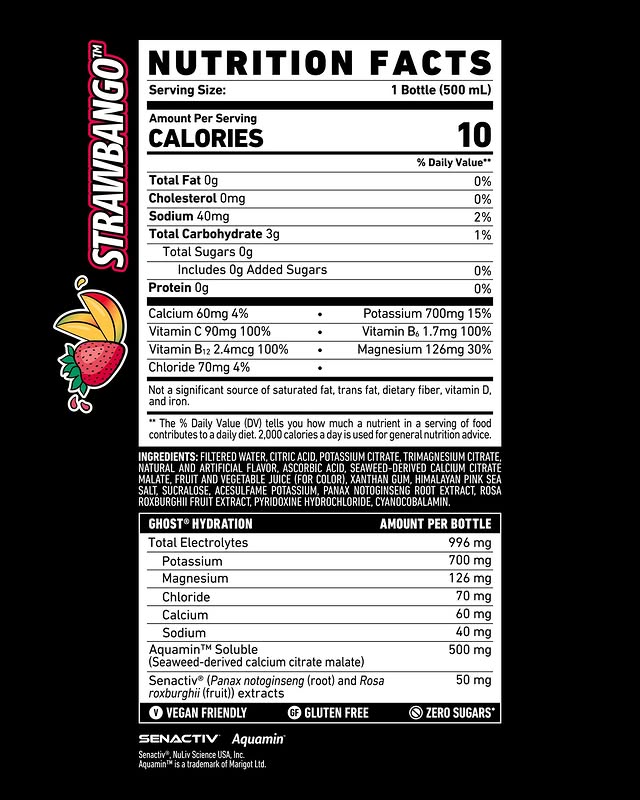
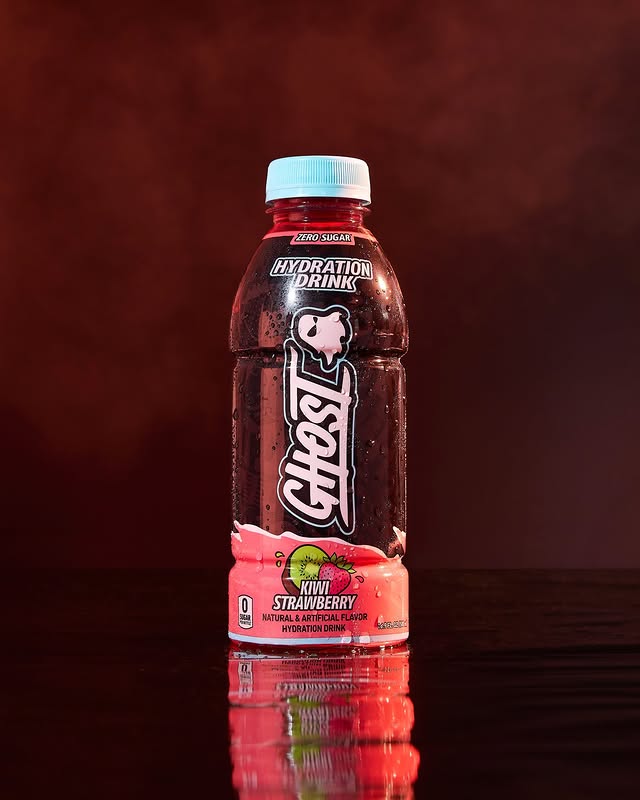
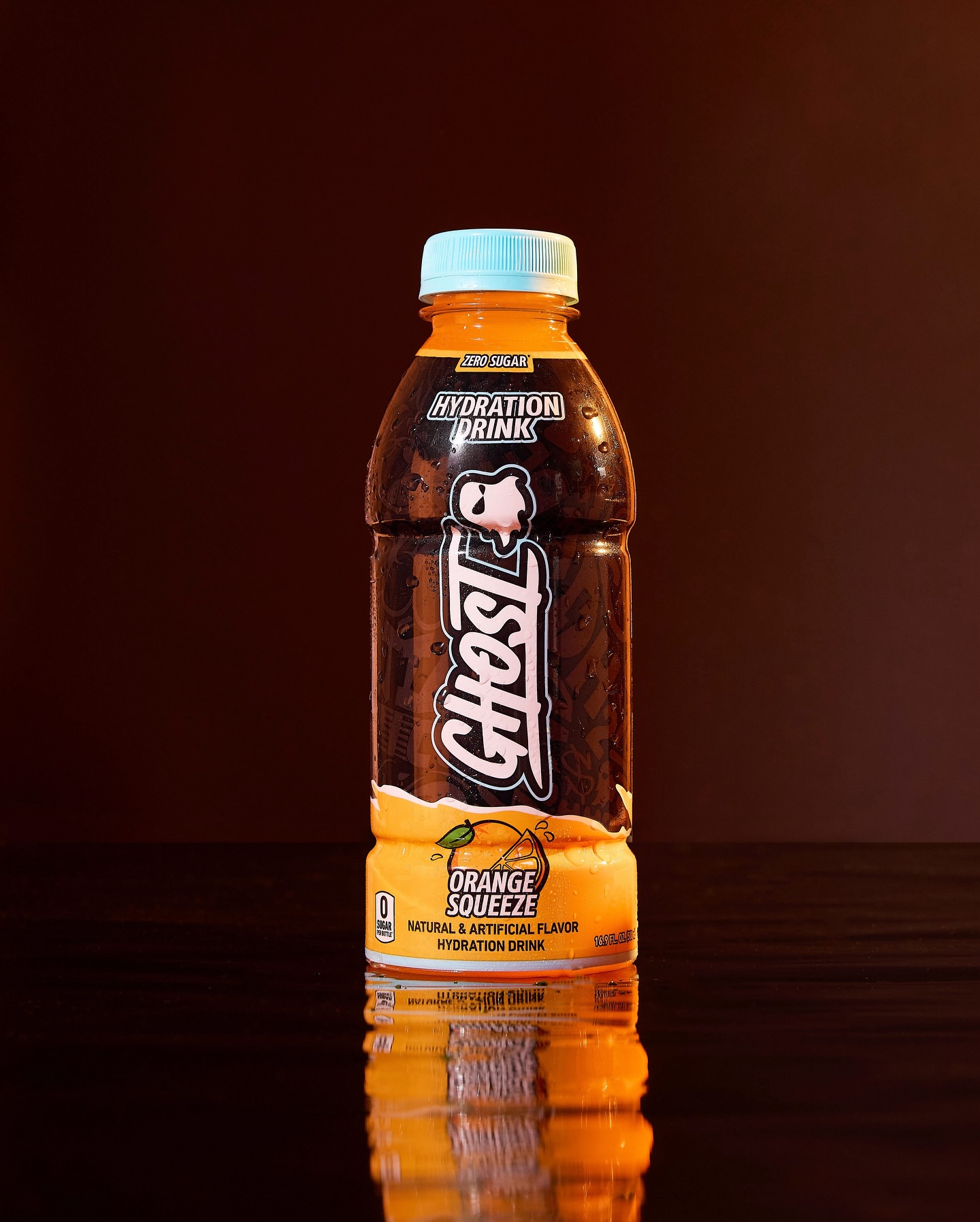
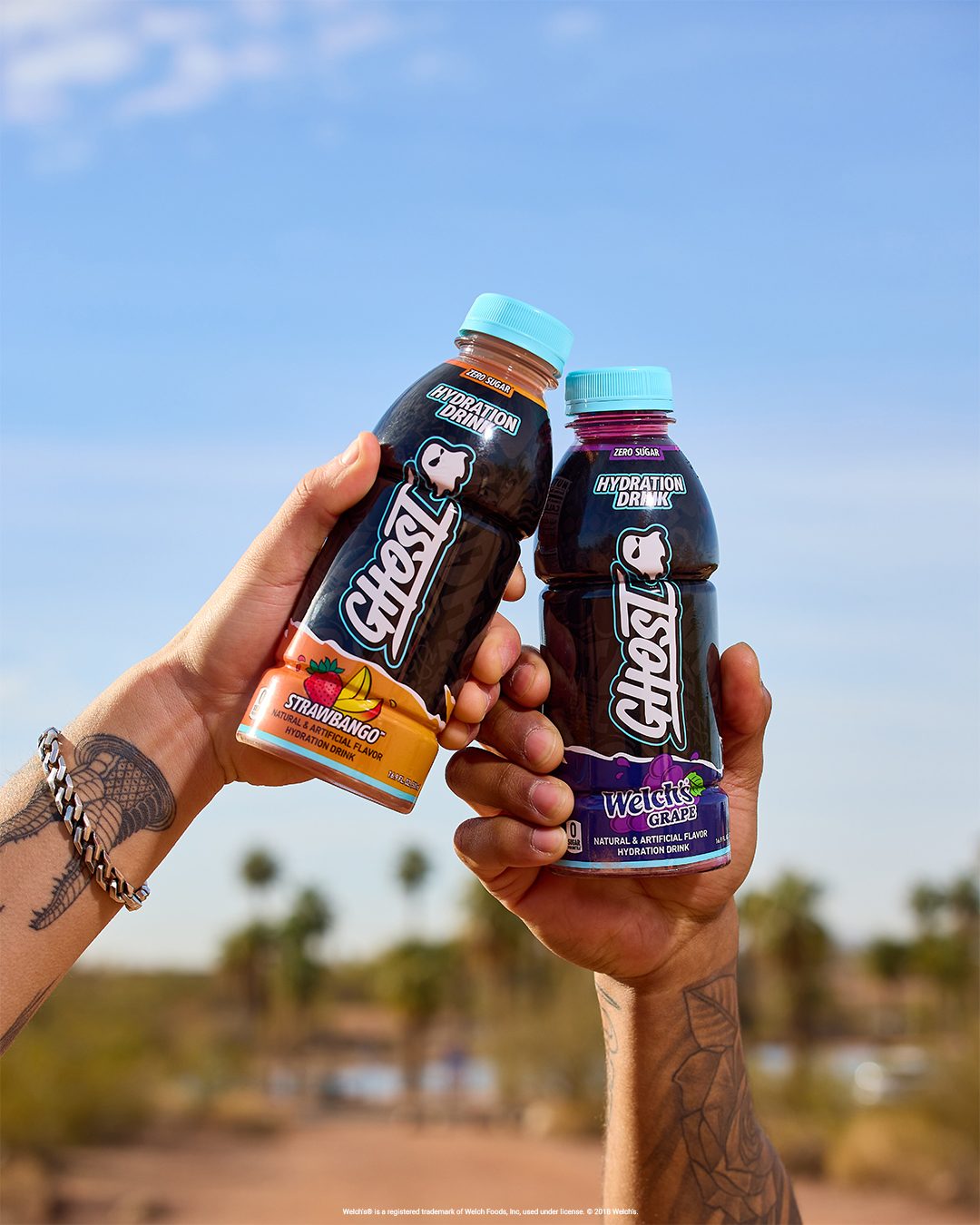


Comments and Discussion (Powered by the PricePlow Forum)